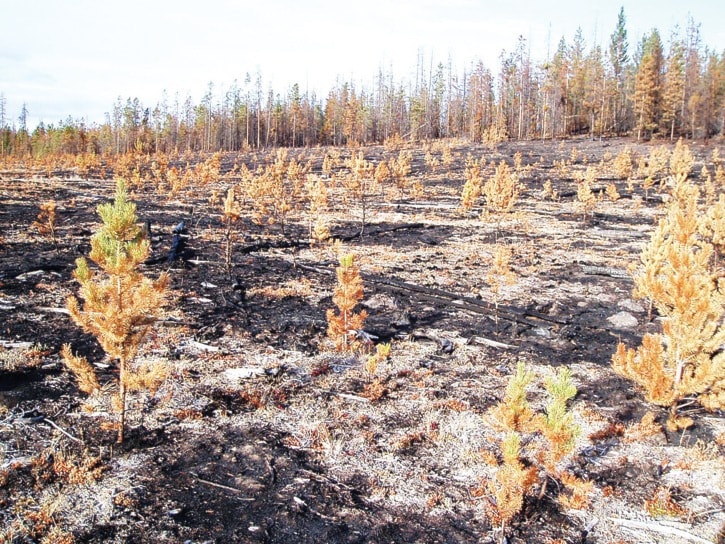Some of the areas burnt out in the Cariboo Chilcotin in 2009 and 2010 are being reforested.
“We are going back to some of the plantations and reforesting the ones that were burnt. Not only were the mature trees killed in the fires, but a lot of the plantations were burnt,” Tolko’s regional silviculture forester Grant Glessing says.
In the Cariboo region alone, Tolko lost 10,000 hectares of plantations to fire in 2009 and 2010, an area representing 6.5 per cent of the total 155,000 hectares of cut blocks it manages.
“It was a pretty big impact,” Glessing says.
Lava Canyon’s Siwash area, located 150 kilometres by road from Williams Lake, represents the company’s biggest damaged area.
“In that fire area alone we’ve put 4.3 million seedlings in this year. Those went in about a month ago into 2,800 hectares.”
Another 200,000 seedlings were planted in the Mackin Creek area and the plan is to plant a total of nine million in 2012.
For 2013, the company has ordered six million seedlings, half of those for fire affected areas.
Two years ago West Fraser and Tolko began working with the Ministry of Forests Lands and Resource Operations and BC Timber Sales to form a fire committee to look at ways to work out the problems that existed.
“It’s been a very good working committee,” Glessing says.
Malcolm Sutton, silviculture forester with West Fraser agrees and says the committee has helped identify issues up front to deal with them and come up with solutions as a group.
He confirms West Fraser has also replanted burnt areas in the Siwash and Mackin Creek areas, and plans to put in another two million seedlings into the Mackin Creek area in 2012.
Over the years there have been isolated pockets of burnt out areas for West Fraser to reforest, but nothing to the same scale that resulted from the 2009 and 2010 fires.
“We participated with the forest service last year in what was called the modified seeding trial. The government did a trial on direct seeding to see if that would be more effective. They’ve only got early results so far so they can’t really comment,” Sutton explains.
Glessing says in many areas, trees come back naturally, and reforestation isn’t needed. However, companies fill in the voids, and with fire damage, some cases are warranting 100 per cent planting.
To help Tolko tackle the problem of planting in areas where it hasn’t planted traditionally, it hired researcher Clare Koiistra, who has been doing trials around difficult reforestation, using different hydration and fertilization packs.
“We looked at how we could possibly reforest these areas,” Koiistra says.
“In the past, the companies and forest service relied on natural regeneration; however, the fires took all the new seedlings and cones and burnt them up. Suddenly we had these gigantic openings that had no feed source and the only option left was to replant.”
One of the trials has been to create disc trenches on site with a skidder and plant seedlings on the leeward side of the resulting mounds. Another trial is around tree species.
While the main ones are Douglas fir and lodgepole pine, Tolko has introduced western larch and ponderosa pine.
Both species exist nearby geographically and have potential, as the climate changes due to global warming, to grow in these areas, Koiistra says.
West Fraser, however, is planting predominantly lodgepole pine, Douglas fir and spruce.
“The other thing we looked at was fertilization, in combination with hydration. We’re using material that will collect water unto itself and hold it and make itself available to trees in longer periods of the dry season,” Koiistra says.
In very early stages of the trial, both the trenching and fertilization seem to be effective, although Koiistra emphasizes it is the early stages and all the data has yet to be analyzed.
